My normally easy Sunday 12-mile walk was grueling, made so by the frigid cold and gusty winds.
I love the cold, I revel in it, but the conditions were so severe that I almost turned around and went home.
But I was on a mission.
I wanted to buy a hat in Harlem, and not just any hat.
The winds raking the George Washington Bridge and the Hudson River path were especially harsh. The temperature was in the low 20s but the wind made it feel like it was in the single digits.
I didn't see any of the homeless people who sometimes camp beneath the bridge.
This is the familiar view of the GWB:
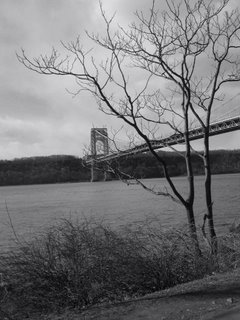
But there's another aspect to the bridge, one you would never see unless you were on foot and knew where to look.
The homeless seek refuge under the approach ramp on the New York side. It was deserted Sunday -- in this weather, anyone sleeping there runs the risk of freezing to death. But you could still feel the despair in the air, which cut to the bone just as mercilessly as the cold.
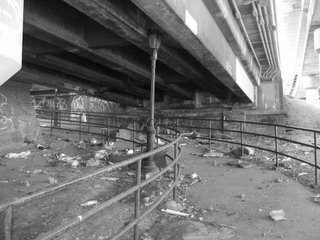 Underneath the bridgea world of broken spiritstucked away, unseen
Underneath the bridgea world of broken spiritstucked away, unseenMy walk took me past the Cotton Club, at 125th Street and 12th Avenue. I wanted to stop in to ask vocalist Pamela McPherson-Cornelius if she liked the
photo of her I posted last weekend. (I was prepared to run if she didn't.)
But there was no show going on. The place was deserted. Outside, leaves blew in tight little circles by the front door.
 At the Cotton Clubis that Duke Ellington's ghostin the pinstriped suit?
At the Cotton Clubis that Duke Ellington's ghostin the pinstriped suit?Now I could focus on finding that special hat.
I walked down 125th past the Cotton Club, past the Apollo Theater -- where Ella Fitzgerald and James Brown and so many others of electrifying talent brought down the house, the place where stars are born and legends are made.
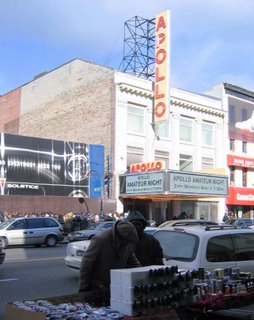
I was headed toward 125th Street and Lenox Avenue, the heart of Harlem, just a couple of blocks from the Apollo.
I've wanted an old-school wool Kangol-brand cap for a while now.
Tastes in North Jersey run toward the provincial, however, and they're very difficult to find there.
But in Harlem, a friend told me, they abound, plentiful as manna fallen from heaven.

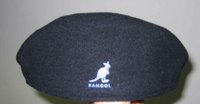

At 125th and Lenox (now called Malcolm X Boulevard) is a hat lover's nirvana.
When my friend told me about this shop, I asked him for the street address.
He didn't know.
Then I asked him how I'd recognize it.
"Believe me," he said, "when you get there, you'll know."
Now I knew.
Big glass windows opened onto a shop filled with rack after rack and shelf after shelf of every kind of hat imaginable, and some that were unimaginable.
It seemed like half the world was in there shopping.
And there, in the center of it all, was the object of my quest: a navy blue wool Kangol, as old-school as Run-DMC and as stately as a touring car.
With my purchase perched atop my head, I made my way back to the Hudson River path.
On the way, I stopped for a few self-portraits with some friends, the stars of posters that served as a thought-provoking backdrop.
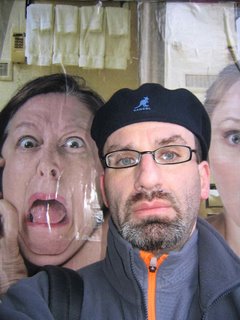
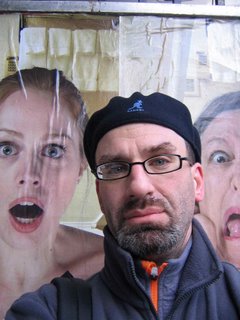
Back on the desolate river path, the wind-whipped debris sand-blasted my face. I wondered if I would run into
Mr. Driftwood.
I passed a couple of his sculptures that had been knocked down by the wind or vigilant park guards, and an interesting artistic statement consisting of eggs that suggested he was working in a new medium.

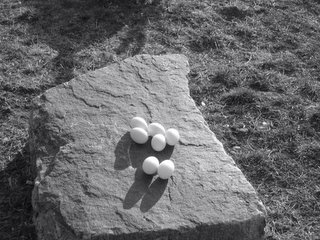
About a mile farther down the desolate path was Mr. Driftood, working away.
I asked him about the eggs. Turns out they were put there by one of his fellow artists, with whom he enjoys a friendly rivalry.
We talked about my hat adventure.
He asked me if I had eaten at Sylvia's, the world-famous soul food mecca that's just a stone's throw from where I bought my Kangol.
I told him that I hadn't, but plan to once the weather warms a little.
"Oh, you should," he said. "Sylvia's from my hometown, Monks Corner, South Carolina. Lovely woman. Lovely woman."
We chatted just a couple more minutes. Just standing there, nothing moving but our mouths, we were absorbing the full force of the wind and the tip of my nose was becoming frostbitten.
Mr. Driftwood returned to his work, and I headed down to the East Village for a beer and some hot miso soup.
Then I began the long, cold walk home.


 But there's another aspect to the bridge, one you would never see unless you were on foot and knew where to look.
But there's another aspect to the bridge, one you would never see unless you were on foot and knew where to look. I was headed toward 125th Street and Lenox Avenue, the heart of Harlem, just a couple of blocks from the Apollo.
I was headed toward 125th Street and Lenox Avenue, the heart of Harlem, just a couple of blocks from the Apollo.

 At 125th and Lenox (now called Malcolm X Boulevard) is a hat lover's nirvana.
At 125th and Lenox (now called Malcolm X Boulevard) is a hat lover's nirvana.
 Back on the desolate river path, the wind-whipped debris sand-blasted my face. I wondered if I would run into Mr. Driftwood.
Back on the desolate river path, the wind-whipped debris sand-blasted my face. I wondered if I would run into Mr. Driftwood.
 About a mile farther down the desolate path was Mr. Driftood, working away.
About a mile farther down the desolate path was Mr. Driftood, working away.



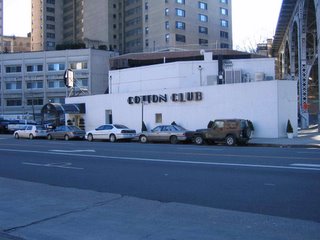

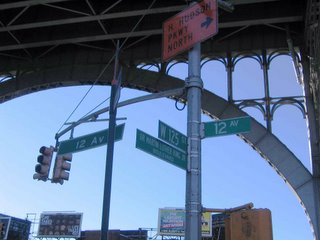

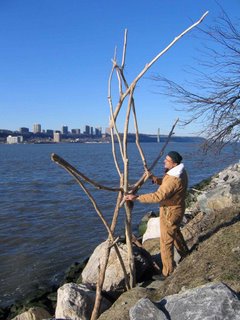
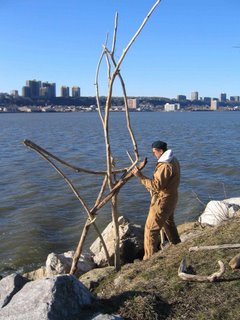
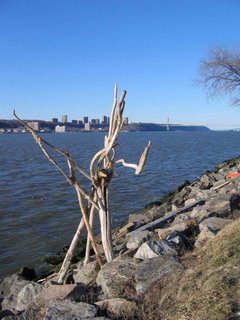
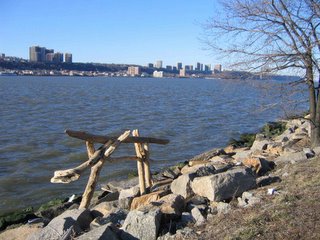
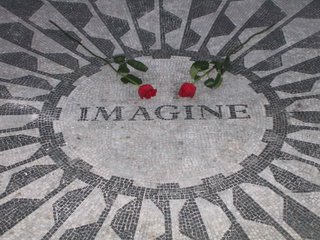


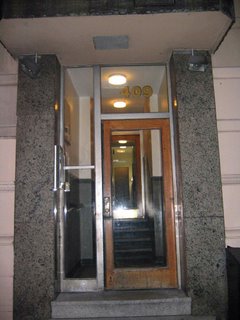

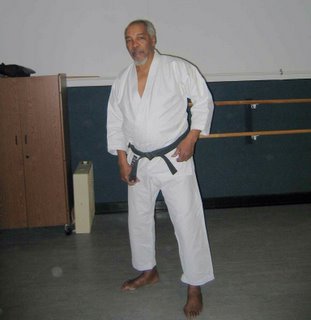 He's 67 but moves with the litheness and power of a far, far younger man. For those who keep track of such things, he's a yondan -- or fourth-degree black belt -- though he gave up testing for rank a couple of decades ago as a mostly political exercise in ego massage. Were he to test today, he would likely be a rokudan, or sixth-degree black belt. Possibly seventh degree. "So what? Who cares?" he would say.
He's 67 but moves with the litheness and power of a far, far younger man. For those who keep track of such things, he's a yondan -- or fourth-degree black belt -- though he gave up testing for rank a couple of decades ago as a mostly political exercise in ego massage. Were he to test today, he would likely be a rokudan, or sixth-degree black belt. Possibly seventh degree. "So what? Who cares?" he would say.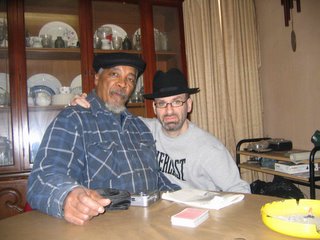 Then, it was off to a culinary mecca on Ninth Street in South Philly called Geno's Steaks. Vegetarians, my apologies for these photos. And you might not want to read the next few sentences.
Then, it was off to a culinary mecca on Ninth Street in South Philly called Geno's Steaks. Vegetarians, my apologies for these photos. And you might not want to read the next few sentences.
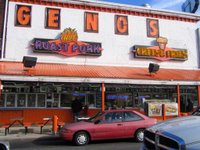
 If you've never had a cheesesteak (and if you're not a vegetarian), you don't know what you're missing.
If you've never had a cheesesteak (and if you're not a vegetarian), you don't know what you're missing. Kind of a strange self-portrait, but insofar as it reflects things that are important in my life, it's actually quite accurate.
Kind of a strange self-portrait, but insofar as it reflects things that are important in my life, it's actually quite accurate.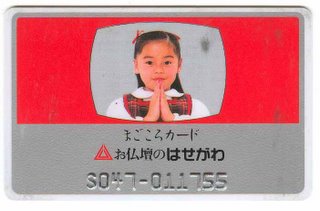
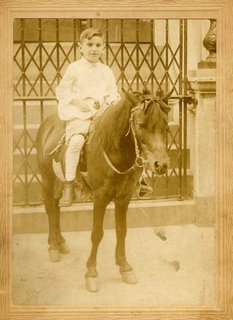
 " ... gray clouds part like a fleece jacket unzippered ... "
" ... gray clouds part like a fleece jacket unzippered ... "
 Anatomically correct kitty statue, 79th Street and Park Avenue, Manhattan
Anatomically correct kitty statue, 79th Street and Park Avenue, Manhattan